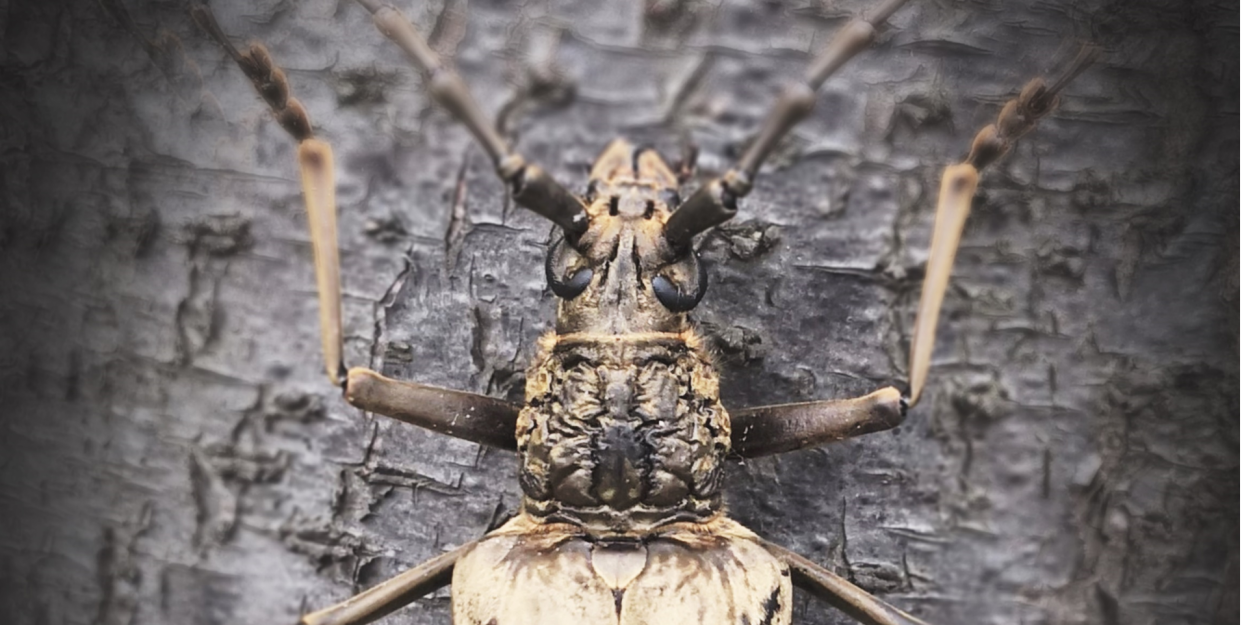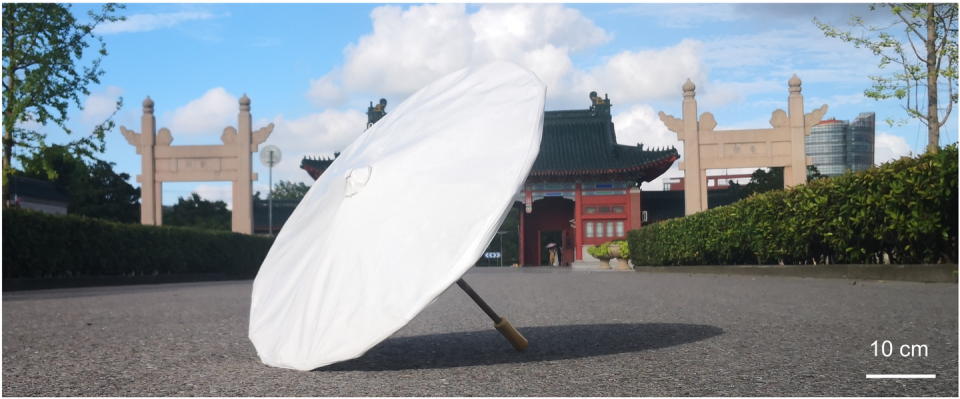This Badass Beetle Could Keep Your Car Cool

Researchers at the University of Texas at Austin turned to properties of a longhorn beetle to create a new coating.
By reflecting infrared energy, the coating can passively cool surfaces, from a black car to your smartphone.
The researchers published their findings on June 15 in the journal Proceedings of the National Academy of Sciences.
A black car on a hot day is a recipe for disaster. It absorbs more sunlight than a white car, making the cabin about 5 to 6 degrees hotter, on average, after an hour. That means it'll take more energy to cool down the interior, too—not only wasting precious fuel, but also leading to increased emissions.
That's a problem. Could a beetle bring the solution?
Researchers at the University of Texas at Austin have created a new coating, inspired by a species of longhorn beetle, that can passively cool surfaces without using up more energy. This means your car could be wrapped in a material that could help the environment.
The scientists published their results on June 15 in the journal Proceedings of the National Academy of Sciences.
The specific beetle in question, Neocerambyx Gigas, can survive in some of the most unforgiving climates, near active volcanoes in Thailand and Indonesia. We're talking temperatures that regularly surpass 105 degrees Fahrenheit, with ground temps reaching upward of 158 degrees.
While prior research had already unearthed the beetle's knack for keeping cool, it was unclear exactly how the bug could do it. The answer: it all comes down to an unusual property of its wings, Yuebing Zheng, an associate professor at the University of Texas at Austin, tells Popular Mechanics. Triangular "fluff" structures help to reflect sunlight while shedding internal body heat.
"A butterfly is colorful because nanostructures reflect light in a different way," says Zheng, who led the research. "The beetle wings not only show a different color, but also have this thermal function where they're able to reflect certain wavelengths."
Neocerambyx Gigas wings reflect not only sunlight in its harsh environment, but also energy in the infrared band of the electromagnetic spectrum, Zheng says. To mimic that property of the wings, he and his team turned to Polydimethylsiloxane (PDMS), a common transparent polymer from the silicone family frequently used in everything from contact lenses to shampoos and caulking.
The researchers found their film could reduce surface temperatures of items in direct sunlight by about 9 degrees Fahrenheit.
PDMS is also great for scaling up because it's inexpensive. Although scientists can learn from nature in a design process called biomimicry, Zheng says it's not always feasible to build large-scale versions of tiny micro or nanostructures.

"Nature takes such a long time to come to a reasonably good structure ... a lot of research is required to mimic the functions," he says. "Even though you can make an exact replication, you still have to think about large scale production, because such a small bug might be capable itself, but you have to make it larger scale for materials."
Moving forward, Zheng says it's not quite clear which applications will come to fruition, but he's leaning toward mobile phones as a start. When you use an electronic device for too long in the sun, it can overheat and even shut off. Zheng and his colleagues see the coating preventing this sort of mishap in the short term.
In the long term, they hope to see the coating used on top of windows in office and apartment buildings, or as a wrap on cars to keep them cool. In both cases, the coating could cut down on air conditioner use.
"With a coating like this, you don't need input energy," Zheng says, "and that's important due to climate change."
You Might Also Like

